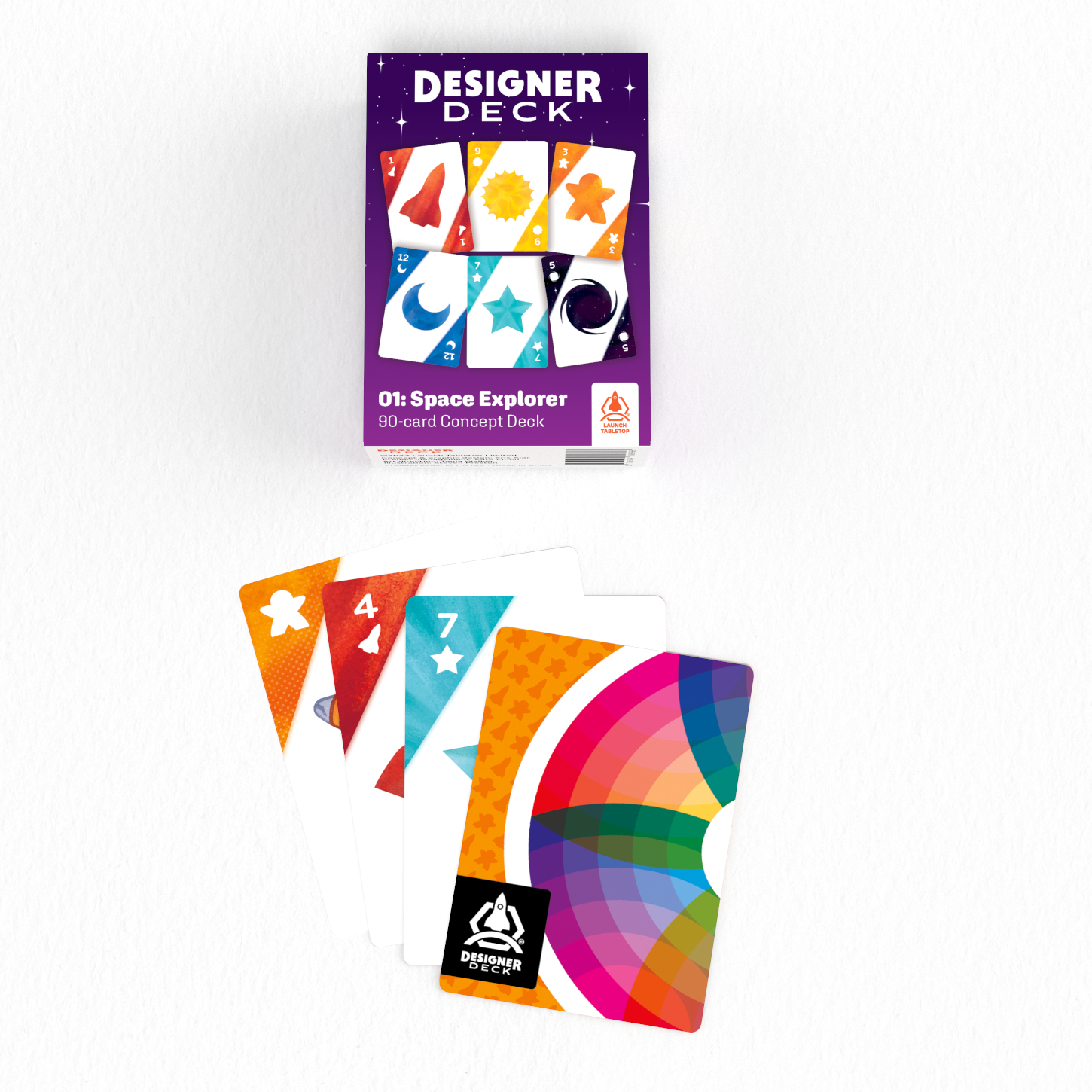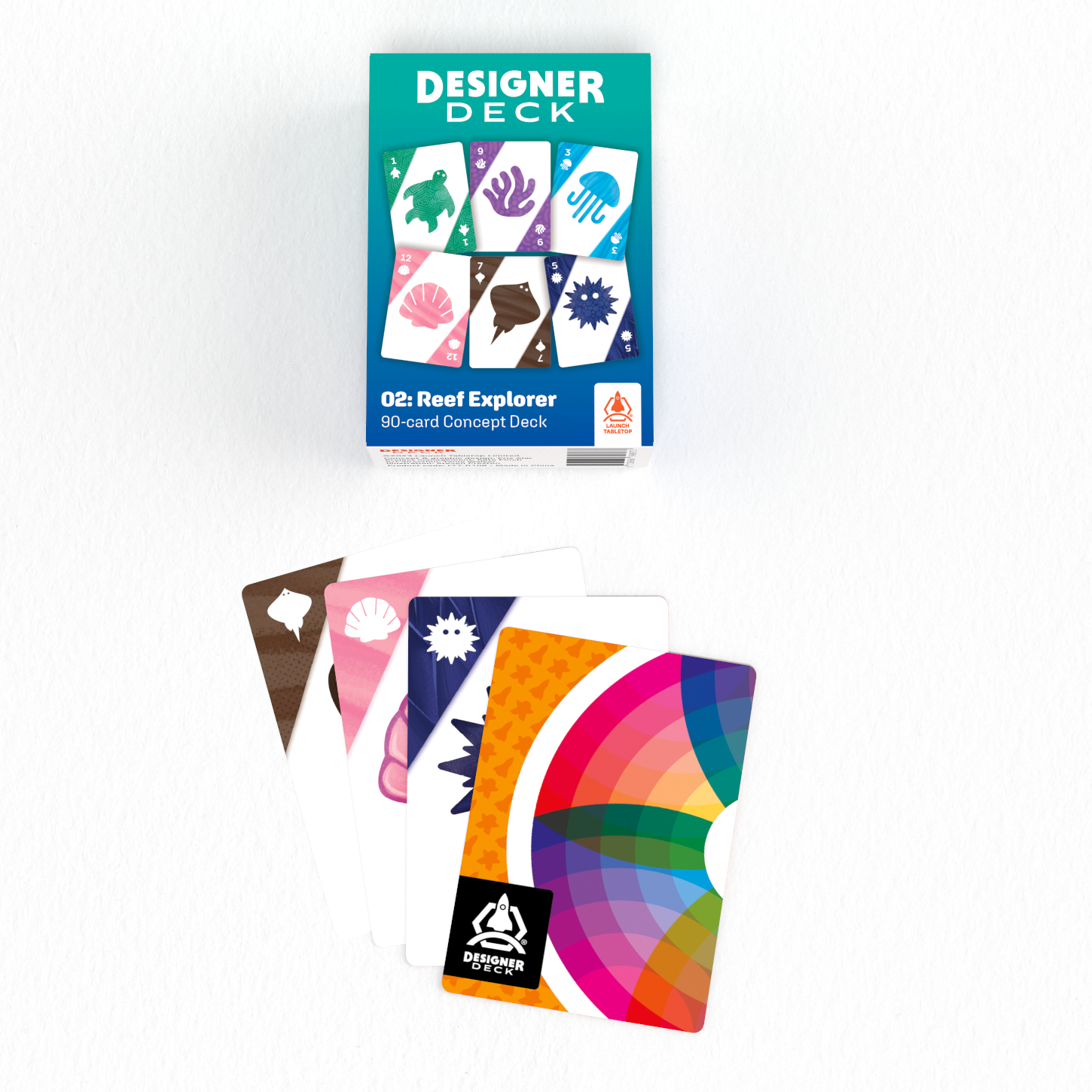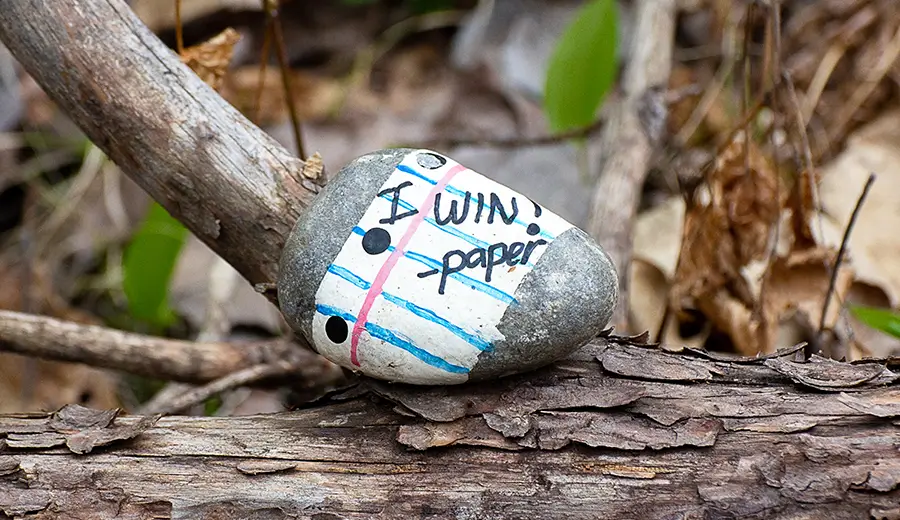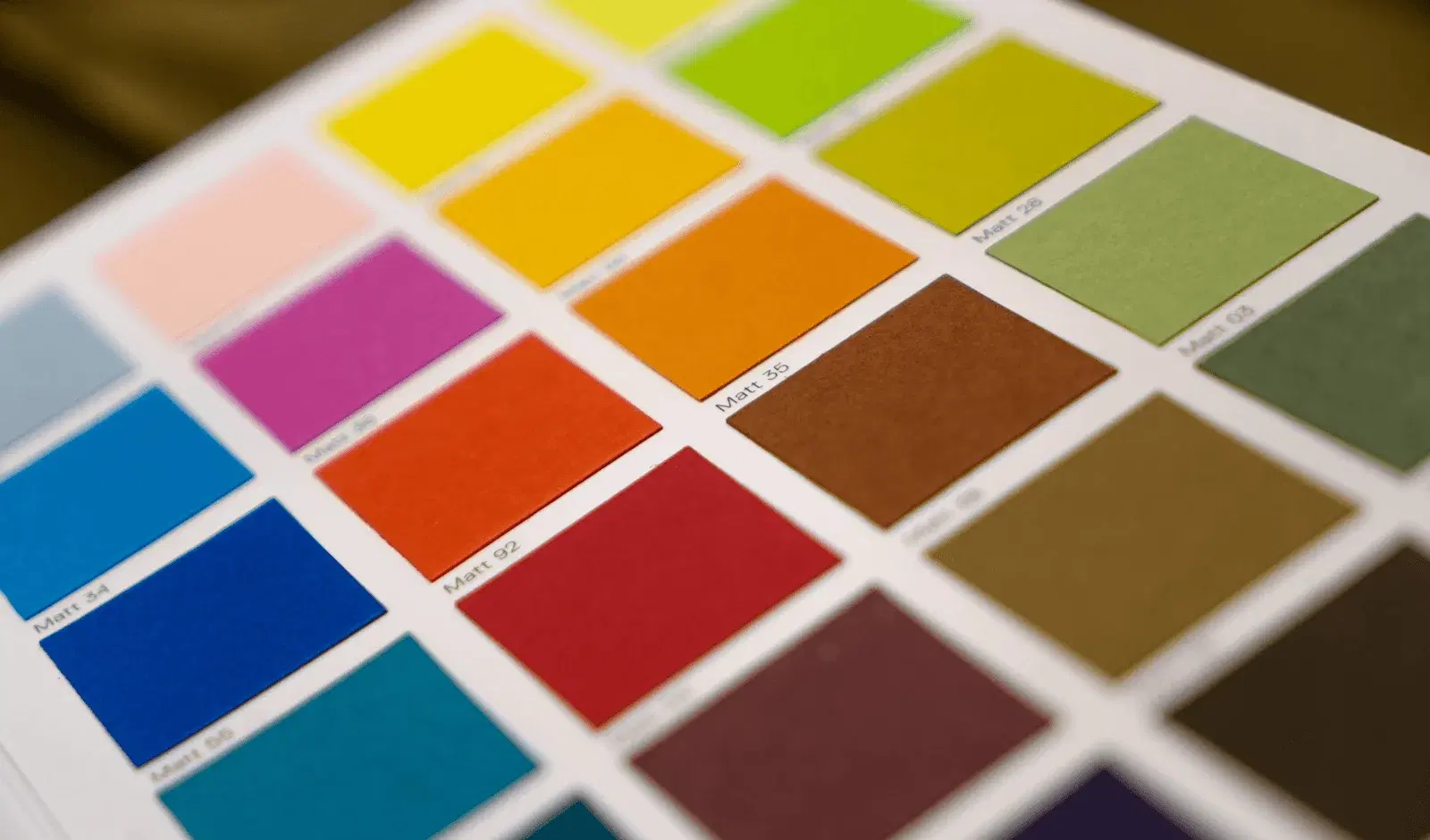Tips & tricks
Build your game on a budget
Whether you're brand new to boardgame design or a seasoned hand, you're probably searching for ways to keep costs low.
Everything is so expensive right now. Being able to create a game within your budget means you can afford to keep creating games, and that's really the goal, isn't it. We're here to help you with that.
Tania Walker, 28 Aug 2023
Creating a game within your budget means you can afford to keep creating games
Concrete tips to keep costs down
1. DIY prototypes
Tempting as it is to rush an exciting game concept to print-on-demand, the simplest way to save money early in the process is by making DIY prototypes at home. It's time-consuming and makes for flimsy prototypes, but in early development, you'll be iterating quickly, which means frequent adding, removing, and changing parts of the game.
Right now, only the content of your game matters. So let it be flimsy and ugly; you'll be throwing out many of these slips of paper during the process anyway. Save your money for when your concept is solid and you're in the latter stages of playtesting and the first stages of pitching: that's when you'll want Launch Tabletop's beautiful and sturdy game prototypes.
2. Try our Designer Decks
Check out Launch Tabletop's Designer Decks: 90-card packs of template cards created to help you test out game ideas quickly.


Each pack contains 6 suits of cards numbered 1-12, plus an unnumbered 'hero' card, all with identical card backs. The suits are associated with unique colours and symbols, allowing you to use as many or as few as you need to represent the content of your game design. The pack also includes 2 'wild' or 'Joker' cards with unique art.
Each pack is themed, with the first two covering Space and Ocean - however, the themes are represented with very broad, basic symbols, so they won't distract from the content of your game. Also included are 10 blank card fronts, so you can add further special-function cards to the deck.
These decks may come with a small outlay, but your time has value too, and using a Designer Deck to iterate your concepts will save you hours of tiresome printing and cutting out prototypes. The professional finish, attractive design, and sturdy construction of the Designer Deck is sure to make a good impression at the playtesting table, too.
3. Print-on-demand: professionalism at an affordable price
While the first tip stands, there comes a time in the development of your game when it's important to ditch the printer paper, scissors, and template cards, and switch to high-quality, professionally-produced demo copies.
If you're ready to pitch to publishers or investors, you don't want them distracted by poor quality prototypes. A bad prototype risks turning off the publishers, investors and backers you most want to attract - and in the long run that could cost you far more money than you save by (sometimes literally) cutting corners.
One of the services offered by Launch Tabletop is the production of affordable prototypes with retail-quality polish. The quality means they'll endure just as much play as any other retail game, so you won't have to worry about your demo copies falling apart halfway through a convention.
4. Good things come in small packages
Are you using the smallest possible box for your game components?
Keeping your game box as physically small as possible can keep things cheap. Less materials equals lower production costs, and less weight (and less volume) equals lower shipping costs. Over hundreds or thousands of units, those little savings add up.
The advantages stack up too. Consider:
- A box properly fitted to its contents is less likely to need an insert.
- Snug and secure contents are less likely rattle around taking damage in transit.
- Less materials and manufacturing = better for the environment.
- Collectors with crowded shelves will appreciate a game that isn't a space hog.
- A small game is easier to take to parties, exposing your game to a wider audience.
5. Quality content, not quantity content
This tip follows from the above: are your game components as compact as they can be?
As important as it is to not waste space with your box, you don't want to waste space inside it, either. And if you can reduce the size or number of components, you can once again reduce manufacturing cost, box size, and shipping weight. You may even reduce how much graphic design and illustration you'll need, cutting back on a particularly big cost.
Think about each component in your boardgame, and ask:
- Is this necessary?
- If so, can it be smaller? Could that tarot card be a bridge card, or that bridge card be a mini-euro card?
- Could some of your components be combined or do double-duty? Are you using double-sided components to their fullest extent? For example: a farming game that includes cabbages and carrots may use double sided printing to create tokens with carrots on the front and cabbages on the back, allowing the user to flip to whichever is needed.
- Can you use more efficient graphic design to reduce the amount of content on a card? Are you using icons instead of category names?
- Can you use an illustration style that reads well at a small size?
- Does this card or this type of component need illustration, or could bold graphic design do the work here?
- Have you edited your card text to be as brief as possible? Do you need all that flavour text?
- Could that rulebook be reduced to a folded rulesheet? Consider hiring an editor to cut and reword your text; you would be amazed how much space you can save.
- Could those wood components be (much thinner) cardboard ones?
6. Paper beats rock (or metal or plastic)
As a designer, you get to choose from almost endless possibilities and combinations of materials for your game.
Paper, cardboard, wood and plastic are all commonly available, along with more high-end materials like metal and glass. While all these options offer pros and cons, if your main goal is to keep costs low, you'll want to go with paper and cardboard.
So what's good about mashed-up tree? Well, it's renewable, recyclable, and affordable, and while it's growing, it's busy creating clean air too - that's a heck of a bonus.

Paper beats rock every time.
There's a reason for the long association between boardgames and cardboard: cardboard is a super versatile material for the particular needs of boardgames. You can print anything directly onto it, double sided and in full colour, for cheap. It can be produced in sheets, cut to intricate shapes, folded, perforated, and punched through. Producing tokens to be punched-out and sorted by the players rather than by the factory saves labour costs - and most players love that part of opening a new game.
Finally, of all the components listed above, paper and card are the lightest, and if you've been paying attention, you know what that means: lower shipping costs. In these times, that's a must.
7. Creative services: shop around
The look of your game matters.
A beautiful game will stand out on the shelf, but if your game box looks unprofessional or cheap, a potential customer might never pick it up at all. Unless you're a wunderkind who can do it all - game design, illustration, graphic design, and content editing - at some point you'll want to hire creative professionals.
Sounds expensive? It is. Depending on how much art and what style your game requires, this may be one of your biggest costs. If you're considering alternatives, tread with caution, as there are pitfalls in trying to cut too many corners here. The two main ones to avoid:
- Don't DIY this unless you have at least some experience - each of the above skills is a profession because they require specialised tools, knowledge and skills.
- Avoid the temptation to use exploitative websites that promise art or design in return for the price of a cup of coffee. You get what you pay for, and what you're often paying for here is inexperience, or worse, low-quality work, or worst of all, rip-offs and clipart passed off as originals. (As for AI art, it's all of the above.)
But hiring professionals doesn't have to break the bank. Here are three ways to shop around for a budget artist deal:
Get multiple quotes.
Unless you have your heart set on a particular artist, identify a few whose work you like, and ask for quotes from each of them. The same goes for editors, graphic designers, and art directors if you plan on using one.
You'll be amazed at the disparity between what different creatives charge, and it's not always directly tied to quality - some creatives work faster than others, or don't rely on their creative work as a major income source, or live in a more affordable place. All these elements can impact price, so ask around. You might be pleasantly surprised.
Seek recommendations.
Bonus tip: talk to people you know in the industry and get recommendations. This way, you're benefitting from someone else's legwork and research, you know the artist can deliver, and you've seen their work.
Try someone new.
This is the riskiest tip, but if you're on a shoestring budget, scour online art sites for student artists. As they're trying to gain experience, they will probably be willing to take your project on for less. We don't suggest you ask anyone to work for free (or take on board anyone who offers to do so, as it's a sign they might not have given the commitment much thought). And be aware that their inexperience may affect their speed or quality; have a backup plan, just in case. But with all that said, you might just stumble on a new talent, help someone launch their career, and save some money in the process.
8. Creative services: more tips
There are so many ways to save here, we're rolling them into one final super-tip.
Be the early bird.
Though art and design are often the final elements created for a game, it's important to start planning for them as early as possible. Creatives - especially illustrators - are often booked months in advance, and if you approach an illustrator at the last minute you are likely to find they're unavailable. On top of that, many illustrators charge a premium for 'rush jobs'.
As for designers, it's useful to get them involved even earlier - they may be able to suggest ways to simplify and streamline that could save you money at the illustration phase.
Know what you want.
If you're not working with an art director, it's important to have a clear idea of the visuals you want for your game. Communicate your ideas clearly, using reference images and thumbnail sketches if you wish. Most artists charge for changes after a certain point, and the more back-and-forth you have to do with your artist on any particular piece, the more you're likely to end up paying. Approaching each piece with clarity will save you and your artist time, money, and sanity.
Alternatively, if you love your artist's work and you're not fussy over the exact look of the content, consider describing the function of each card, and letting the artist loose to interpret it however they wish. Artists love this sort of freedom and it can net you some incredibly creative results. You may even be able to negotiate a reduced rate with an artist if you let them know they're free to provide their own interpretations.
Here's one we prepared earlier.
If you want a particular artist and can't afford them, and your boardgame has a flexible enough theme, ask that artist if they're willing to licence out some of their pre-existing pieces. This will be much cheaper than paying for original work. Faster, too.
Target your spending.
So there's this artist you absolutely love, but they're way beyond your budget. What to do?
Consider using expensive art in key locations. Hire that Dream Artist for a single piece - your box art. This is the part of the game people will see the most, and come to associate with it. You can always hire a different artist for the rest of the game. Better still, providing your agreement with Dream Artist allows it, you can likely re-use elements of that gorgeous piece of cover art elsewhere in the game.
Style it out.
The style of art you choose can drastically change the cost. Full-blown semi-realistic painterly illustrations take a lot of time, and will almost certainly cost more than cartoony styles, or simplified linework, or super-flat bright modernist styles, or strategic use of black-and-white or monochromatic art instead of full colour illustrations for certain parts of the game.
So unless you're married to a particular style, consider going for a stylised and simple vibe: some of these art styles are beautiful and original, and will make your game stand out among dozens of quasi-realistic-painterly clones.
Does it spark joy?
Here's a thought: does this particular boardgame actually need full illustrations? Some well-known bestseller games have made do with clever graphic design, using colour and layout to communicate concepts. There's a ton of middle ground between “every card a painting” and “every card Helvetica on white”, too: for instance, your graphic designer might create brightly coloured repeating patterns out of the icons they designed for your game. Consider multiple approaches, and think outside the canvas.
9. Talk it over with us
When you start creating your game with Launch Tabletop, you'll be assigned a project manager to guide you through the process and help you get the best results. But we're not just about doing the job, we're about helping new creators get started, and that means we're here for you every step of the way - even before you're ready to go to print.
So if you've got further questions about how to reduce the size of your game, cut content, choose the cheapest combination of components, or find affordable artwork, reach out - we want to help.
Image credit
Photo by Mika Baumeister on Unsplash
Keywords
Related articles in 'Tips & tricks'
Boost your game's table presence
Tania Walker, 28 Aug 2023
Go green with your game
Tania Walker, 23 Aug 2023

